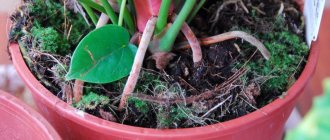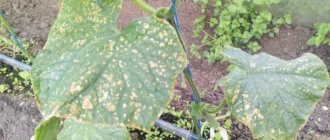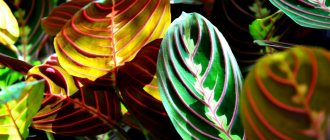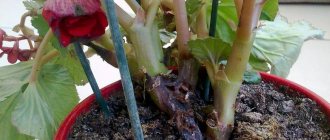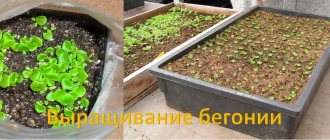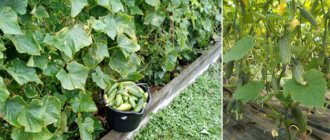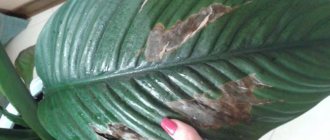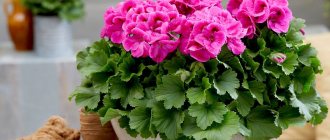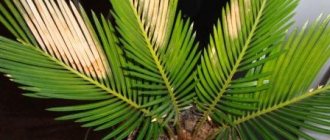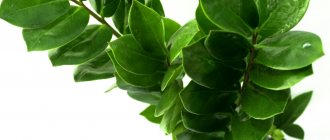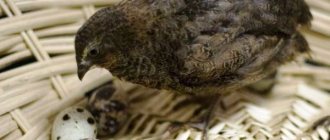Optimal conditions for growing anthurium
What conditions is anthurium accustomed to in nature, and what should a grower strive for when growing “male happiness”?
First of all, high humidity, up to 70–80%. It is quite difficult to provide it in an apartment, especially in winter with central heating: either by regular spraying 2-3 times a day, or by placing a flower pot on a wide tray with wet expanded clay, which does not always look aesthetically pleasing. In addition, when sprayed with a spray bottle, white spots may remain on the bracts, so the flowers should be covered from drops of water, which is also very inconvenient. It’s a little costly financially, but much more effective - placing a humidifier nearby. But even in this case, you should wipe the leaves once a week to remove accumulated dust with a damp sponge.
Do not increase air humidity by excessive watering of anthurium.
The next step to a healthy anthurium is a constant temperature that does not fall below 18 degrees Celsius in summer and 16 degrees in winter. It is optimal to keep anthurium at a temperature of 25–28 degrees from May to September. Drafts and even warm breezes are absolutely contraindicated. The roots of the plant may rot, and the leaves and flowers may freeze.
Spraying the plant in winter and opening the window for ventilation is an almost 100% way to kill anthurium.
The anthurium was watered and the window was not closed - the result is disastrous - the leaves are frozen, the plant dies
Bright light and long days are very necessary for the formation of flower buds and powerful further flowering. But at the same time, the plant should not be placed in direct sunlight, because in tropical forests it is protected from the sun by tree leaves.
Place the anthurium in a well-lit place without direct sunlight, and in winter provide additional lighting for 4-5 hours a day.
In bright light under direct sunlight, anthurium often gets burned
The last condition is watering and soil . Anthurium loves loose, moist soils; this epiphytic plant, almost like an orchid, can grow on tree branches, and to avoid mistakes, choose soil mixtures specially selected for anthurium.
Watering should be done with soft, settled water as the soil dries, but if you maintain high air humidity, then watering will have to be done infrequently.
The best water for irrigation and spraying is rain or melt water.
If the conditions of maintenance are violated, pests may appear on the anthurium or the flower may become sick.
Diagnosis of diseases of “male happiness”
All problems of growing anthurium can be divided into leaf diseases, peduncle diseases, root diseases, and the general unsatisfactory condition of anthurium, which are caused by the presence of pests, infectious diseases, or simply errors in care.
Making a correct diagnosis and starting timely treatment is a difficult task for a gardener, since the symptoms of various diseases are often similar to the consequences of improper care.
It is important to know that anthurium kept in a dry room most often suffers from spider mites; the leaves lose their elasticity from lack of moisture, turn yellow and curl, but these plants are very rarely affected by fungal and bacterial diseases.
In humid conditions without ventilation, plants more often suffer from soil overflow, and as a result, they suffer from infectious diseases.
Having assessed the condition of your premises and the care provided, you can more or less accurately decide how to help the anthurium.
Table - diagnosis of plant diseases and pests
| Causes | Symptoms |
| Dry room air |
|
| Bright light or direct sunlight |
|
| Lack of light |
|
| Watering with hard water, excess calcium | the tips of the leaves turn black |
| Watering with cold water |
|
| Waterlogging of the soil, overwatering |
|
| Lack of nutrition |
|
| Excess nutrition | brown and yellow spots on the leaves without signs of drying out |
| Watering with chlorinated water | white coating on leaves |
| Anthurium hypothermia | quickly browned and drooping leaves |
| Natural causes |
|
| Improper care |
|
| Anthracnose and septoria | Round or oval red-brown, yellow spots from 1.5 to 13 millimeters, often a black dot (spores) can be seen inside. The stain spreads across the leaf and forms holes. Without treatment, the plant dies. |
| Fusarium wilt | Massive, rapid withering of leaves and unnatural bending of peduncles and petioles, dark vessels are visible on the cut of leaves, roots rot. |
| Root rot | The leaves lose their shine, become lighter, and then turn black. Upon examination, the roots are rotten and frayed, the root sheath is separated from the core. |
| Powdery mildew | The leaves curl, turn yellow, become smaller, and a white coating appears on the underside of the leaf. |
| Rust | Red-brown spots on the bottom of the leaf and at the same time light spots on the top, death of the affected leaves. |
| Aphid | The leaves curl, turn yellow, and become covered with a sticky coating. Small green sucking insects are visible inside the leaves and on young shoots. |
| Trips | Affected leaves have an uneven yellow-green color, and the inside of the leaf is covered with black insect excrement. The leaves dry out and fall off. |
| Shchitovka | Whitish or golden tubercles on the leaves. |
| Spider mite | The leaf becomes covered with yellow specks, curls, and dries out. When finely sprayed, a web with insects is visible. |
| Mealybug | The affected parts of the plant seem to be dusted with flour |
Infectious diseases of anthurium in the photo
Anthracnose appears as yellow spots with a black dot in the middle.
Septoria blight affects the leaves of the plant and can lead to the death of anthurium
Root rot can often be found in purchased specimens with constant overwatering
This is what powdery mildew looks like on Kalanchoe. Anthurium is rarely affected by this disease
fusarium affects both the leaves and roots of the plant Anthracnose on a rose: characteristic spots with a brown edge
Anthracnose on anthurium - brown spots with a black accumulation of fungal spores in class=”aligncenter” width=”500″ height=”396″[/img] Root rot can destroy all anthurium roots
An anthurium leaf affected by a fungal disease
A fungal disease on the top leaf has moved to the leaf underneath it
Black roots affected by root rot. There are white - healthy roots, so there is a chance to save the plant
Anthurium leaf covered with rust
Anthurium leaf affected by septoria
Septoria is very similar to anthracnose, difficult to determine without laboratory analysis
Fusarium blight on the aster destroyed the plant in full bloom
Fusarium wilt of violet
The leaves are turning yellow
There may be several reasons for the yellowing of the leaf blade of anthurium. But all of them are associated with a violation of the technique of growing a flower. Let's look at the causes of yellowing leaves and methods of treating the disease:
- If you find yellow leaves on a young bush, this indicates an excess of sun. Young plants are very sensitive and need diffused light. Shade the window and be sure to observe the behavior of the anthurium.
- Young anthuriums lack the rich color of the leaf blades - they are faded and unusually large. These signs mean that the owner has added too much fertilizer to the soil and the flower does not have time to absorb it. In this situation, you need to temporarily abandon fertilizers and increase watering. If fertilizers have not been applied to the soil and the plant exhibits the same signs, then, on the contrary, it needs to be “fed.”
- The lower leaves of the plant turn yellow - a direct sign of aging anthurium. The solution to the problem in this situation will be to rejuvenate the bush, as well as remove yellowed leaves using a sharp knife.
It also happens that yellowness is not observed in the leaves, but they are pale and do not have a rich green color. The reason for this is the lack of lighting. Move the pot closer to the light or provide additional lighting sources. You can purchase special phytolamps if this situation occurs in winter.
Flower diseases, treatment and prevention
Most often, anthurium diseases appear due to improper care, among which the largest place is occupied by overwatering and hypothermia, and as a consequence of this, rotting of the root system.
Infectious diseases pose a great danger to the plant: anthracnose, fusarium, septoria, as a result of which the plant often dies even after treatment.
It is easier to deal with rust on leaves and various root rots. And almost all plants recover and improve their appearance if the cause of the disease was improper care.
Treatment of infectious diseases
Many infectious diseases lead to the death of the plant, but you still need to try to save the plant.
First of all, we isolate the damaged plant from the rest, examine it and make a preliminary diagnosis.
When working with fungicides, be sure to use personal protective equipment and do not eat or drink.
Fusarium wilt is an infectious disease in which the mycelium of the fungus penetrates the living tissue of the plant and clogs vital vessels. Root rot appears, spreading into the trunk. Leaves that do not receive nutrition quickly wither and the plant dies. The best way to fight is prevention. When planting, several grains of Trichodermin are added to the soil mixture to maintain the high vitality of the plant. You can try to save a diseased anthurium by cutting off the living upper part and rooting it, after soaking it in a solution of Fundazol for about 30 minutes.
Root rot most often occurs when the plant is constantly overwatered. Treatment is trimming the rotten parts of the roots and treating with Fitosporin-M or Maxim, transplanting into a new substrate and preferably a new pot.
Rust is a fungal disease that appears on all parts of anthurium, but most often on the leaves. For the purpose of prevention, at low temperatures and high air humidity, treatment can be carried out with Fitosporin, and in case of an already existing disease - with Topaz, Ordan.
Powdery mildew appears when the temperature drops sharply and humidity increases. Preventive measures - do not spray anthurium in cool weather (winter maintenance). Treatment of powdery mildew - place the pot in a warm, dry place, spray with Topaz or Acrobat.
Anthracnose appears due to high humidity, which is exactly what anthurium loves. The causative agents of the disease - fungi of the genus Colletotrichum and Kabatiella - may not manifest themselves for a long time, but when favorable conditions arise for them, they begin to infect the plant. Usually the first symptoms appear on the leaves in the form of spots, which become more and more numerous. The affected leaf shrinks, becomes thinner and becomes like tissue paper. Then anthracnose attacks the stems and almost the entire plant dries up on the root. Treatment of anthracnose should be started as early as possible. The first step is to remove all damaged leaves and destroy them. The soil is changed to a new one, and the roots of the anthurium are disinfected. The plant is quarantined with a decrease in air humidity and a reduction in watering. It is strictly forbidden to spray, since fungal spores are carried by water droplets. If the plant is very sick, then use fungicides: Baktofit, Fitosporin, Fundazol, Ridamin Gold, Silk. Spray the plant 2-3 times every 10-14 days.
Anthurium pests
Small midges (wine flies) often become uninvited guests of indoor flowers; although they are unpleasant, they are practically harmless; the appearance of the following insects sucking the juice from the anthurium is much worse.
Aphid . It is usually introduced “from the outside” with other plants and spreads very quickly among indoor flowers. For treatment, wash the affected areas with soap and water, after covering the soil with a bag, treat with infusion of onions (15 grams of finely chopped onions or 6 grams of dry scales are infused in 1 liter of water for 5-7 hours), Fitoverm, and in advanced cases - Actellik, Karbofos , Fitoverm, Iskra, Biotlin.
Thrips . Thin midges up to 2 mm long. Suck the juices out of the leaves. Appears in a humid room at high temperatures. Treat with Fitoverm, diluting according to the instructions on the package. Treatment is carried out several times every 5–7 days.
Scale insects . They cover not only the leaves, but also the stems of the plant, suck out the juices, and are easily removed with a needle. Since the insects are covered with thick scales, it is necessary to manually collect the scale insects, and then treat the anthurium with a solution of crushed garlic (mix 1 part garlic with 1 part soap and 3 parts water, leave for a day), if this does not help, wipe the stems with a cotton pad soaked in kerosene.
Spider mite . Appears in dry and hot places. It entangles young shoots in a web, sucks juices from leaves, leading to the death of most of the leaves. It is better to immediately apply Fitoverm, and not only on the affected plant, but also to treat neighboring plants for prevention.
Mealybug . White fluffy insect 4–5 mm long. When massively propagated, it leads to the death of the plant. Small colonies of the pest are removed by wiping the affected parts of the plant with a soap solution and then every 7-10 days with repeated procedures, as well as spraying with garlic infusion. Severely damaged plants are sprayed with Fitoverm.
Pests in the photo
Scale insects suck juices from leaves and stems
Aphids can cause great damage to young anthurium leaves
Spider mites drink juices from leaves, drying them out
Mealybug colonies on an anthurium stem can destroy the plant
Thrips appear in a humid environment and at high temperatures
Scale insects on anthurium look like brown tubercles, easily removed with a needle
Spider mites leave such marks on anthurium leaves
It is difficult to notice thrips, but the affected areas and excrement are very clearly visible
Prevention of the appearance of any insects is regular care of plants, wiping leaves from dust, quarantining new plants for two weeks.
The plant is withering
A fairly common problem of “male happiness”.
The main reason is that the flower did not have time to get used to the new environment. A change of environment negatively affects the plant and it withers. Perhaps he lacks warmth and moisture. The main task of the owner is to provide the necessary conditions.
How and with what to treat the plant in this case?
Anthurium should be treated with specialized means. You can buy Actellik or Karbofos. The dosage is as follows: 2 ml. drug per 1 liter. water. A day later, give the anthurium a warm shower, washing off the remaining product.
